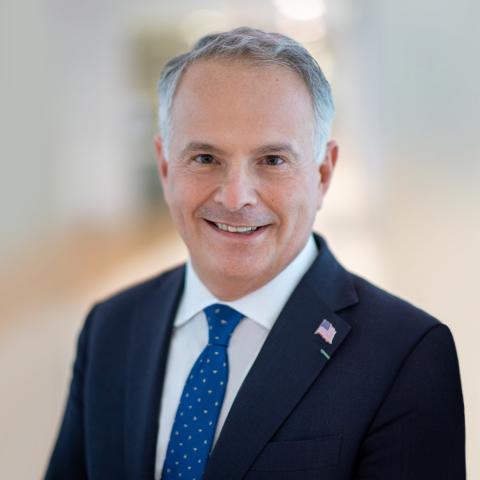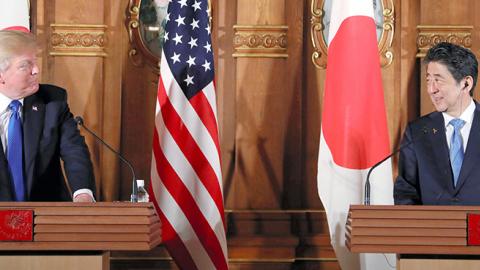Donald Trump’s 12-day trip to Asia—on Monday he will be in Japan, followed by stops in South Korea, China, Vietnam and the Philippines—is the longest presidential visit to the region in a generation. That’s no accident: Although many in Washington see only Mr. Trump’s disruption, Asian leaders know his administration has brought a new seriousness and a nuanced agenda to Pacific policy.
The immediate problem is North Korea’s nuclear adventurism. The broader challenge is China’s growing power and ambition. The overarching goal is managing Asia policy in a way that enhances the security and prosperity of the U.S. and its allies.
The Trump administration begins with a hardheaded view of deterrence. Mr. Trump has rattled some Americans with his threat “to totally destroy North Korea” in “fire and fury” if it attacks the U.S. or an ally. But there is no ambiguity in the message this sends Kim Jong Un. To whatever extent North Korea can be deterred, Mr. Trump has done the job by laying down a clear marker of what war will cost Pyongyang: everything.
Previous presidents’ policies toward North Korea were naive in the extreme. Neither the Agreed Framework in 1994 nor the “six party talks” last decade prevented Pyongyang from getting nuclear weapons. Mr. Trump rightly believes rushing into new negotiations would further enable North Korean deception and stalling, while the regime would continue to develop a nuclear-armed missile capable of hitting the U.S. Negotiating holds the most promise when it is done from a position of American strength.
The White House rightly believes that the best chance of shifting Mr. Kim’s course is with pressure from the Chinese. Although Mr. Trump often invoked China as a nemesis during the presidential campaign, he has since dealt deftly, winning unexpected Chinese support for a Security Council resolution this past September imposing stiff sanctions on Pyongyang. Far from having a rancorous relationship, Mr. Trump has reached out regularly to President Xi Jinping.
Increased cooperation from Beijing isn’t the product of any newly benevolent view of America. On the contrary, pressure from the U.S. has helped to cause the turnaround. The Chinese have heard Mr. Trump’s sharp criticisms of their trade and currency policies. But despite his previous threats, the administration so far hasn’t labeled China a currency manipulator. “Why would I call China a currency manipulator when they are working with us on the North Korean problem?” Mr. Trump cagily tweeted in April. “We will see what happens!” When Mr. Trump stops in Beijing on Wednesday, expect blunt talk urging specific promises from China to further tighten the screws on North Korea.
Beyond cooperation on North Korea, the White House sees the longer-term challenge posed by China’s rise. Here the key is America’s alliances in the Pacific—another central element of the presidential tour. Mr. Trump’s closest friendship with any foreign leader is the one he has quietly cultivated with Japanese Prime Minister Shinzo Abe. The two speak almost weekly. Mr. Trump has made clear that a strong Japan improves regional stability, and Mr. Abe continues to increase military spending significantly.
Mr. Trump’s personal relations with South Korea’s recently elected left-wing president, Moon Jae-in, have been far rockier. Mr. Moon’s preference for dealing with Pyongyang is dialogue. But he has overridden—however reluctantly—the wishes of his political base to say that the U.S. remains central to South Korea’s security. Mr. Moon understands that extends well beyond threats from its immediate neighbor.
Vietnam wants assurances from Mr. Trump that the U.S. will not tolerate Chinese hegemony in the South China Sea. The increased tempo of American patrols through those waters has not gone unappreciated in Hanoi. In the Philippines, President Rodrigo Duterte appears to respect Mr. Trump, in contrast to his disparagement of President Obama.
Both countries, though, pose problems: Vietnam remains under the unflinching control of its Communist Party, and Mr. Duterte has earned condemnation for his government’s extrajudicial killing of drug traffickers. Mr. Trump should speak up on these matters but probably won’t. Nevertheless, his administration is right in seeing Vietnam and the Philippines (a treaty ally) as essential to containing China.
The wild card on this trip is trade. To the disappointment of Japan and Vietnam especially, Mr. Trump withdrew the U.S. from the Trans-Pacific Partnership, an 11-nation trade deal negotiated under President Obama. Then in April he called the 2012 Korea-U.S. Free Trade Agreement “a horrible deal.” But at least when it comes to security policy, the president has his priorities straight.

















